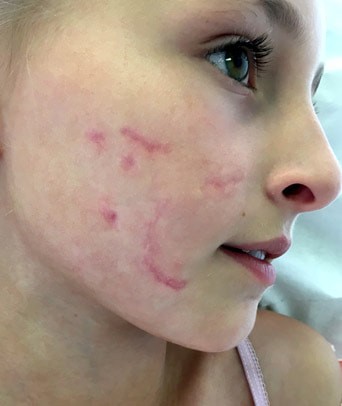
Dog bites to the face can be a serious health hazard, but there are some ways to protect yourself and minimize the risk of infection. To prevent dog bites to the face, avoid these common risk factors. Also, supervise children when they are around dogs at all times. Read on to learn more about the risks and treatment options. Listed below are some tips for preventing dog bites to the face. In addition, you can find helpful information on how to care for your dog after it bites you.
Infections caused by dog bite wounds
The first step after a dog bite wound on the face is to go to a medical professional for evaluation. If the wound is not deep or cosmetically significant, it may be closed to allow drainage. If it is not, it should remain open for at least eight hours to prevent further infection. Patients with diabetes and immune system problems are also at risk of developing an infection. A dog bite wound on the face is not necessarily painful, but it should be evaluated as soon as possible.
The rich vascular supply to the face, hands, and feet contributes to the low risk of infection. However, this rich circulation also predisposes to catastrophic blood-borne infections. A dog’s mouth contains nearly a third of the species of bacteria known as Pasteurella. The infection that results is caused by anaerobic organisms that affect the immune system. An infection on the face is particularly difficult to treat because it is often not clean and may require surgery.
Risk of rabies

Dog bites are one of the most common causes of human rabies infection, and most cases are preventable by vaccination. In fact, dog bites are responsible for 99% of human rabies cases and hundreds of thousands of deaths every year. Rabies is a highly infectious viral disease, and it is often spread through contact with infected animals. While rabies cannot be transmitted from person to person, children should be educated about the risks. If they do get bitten by a dog, it is crucial to clean the wound right away to prevent the spread of the disease to other parts of the body.
Exposure to the rabies virus is most common through bite wounds and open skin cuts. The risk of developing rabies depends on the nature of the exposure, the location where the bite occurs, and the type of animal that bit the person. Bat bites, for example, are difficult to detect and may only cause minor injury, so medical attention is vital. If the bite was on the face, there is a high risk of rabies infection from a dog bite.
Treatment options for tetanus
Surgical repair of a dog bite on the face requires the use of a variety of techniques. Some practitioners prefer to perform immediate primary closure, while others prefer to use prophylactic antibiotics. Listed below are some tips to help you choose the best course of action.
If you’ve been bitten by a dog, the first step to healing the wound is to wash it thoroughly. You can also apply topical antibiotics to the wound. These antibiotics are best for broken skin. Make sure to change the bandage daily to prevent infection. A doctor will also perform a physical examination to determine whether there have been any deep structures damaged. Depending on the location and type of dog bite, the wound may require surgery to repair the damage.
Treatment options for MRSA
If you have had a dog bite on your face, you may be wondering if you should seek medical attention. There are some important things to know about MRSA, a bacterium that can cause severe problems. Generally, this bacteria can be treated with antibiotics, such as ceftriaxone or penicillin. If you do not get treated right away, the infection may return if you don’t have the right treatment.
First, it is important to understand that there are two types of MRSA infections: active and carrier. Active infections have visible symptoms, such as a boil or sore. Carriers, on the other hand, don’t have any visible signs. They simply harbor MRSA bacteria and may be called colonized. However, many people who have active infections can be treated successfully with antibiotics. The good news is that many cases of MRSA are completely curable. Treatment for MRSA after a dog bite on the face will be different for every patient.











